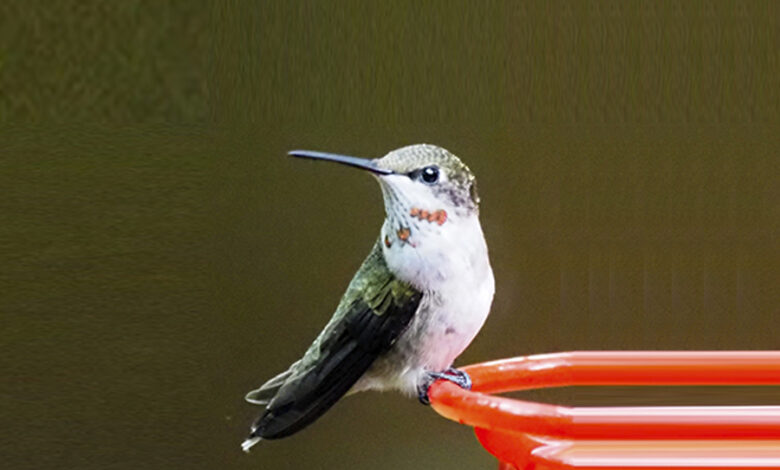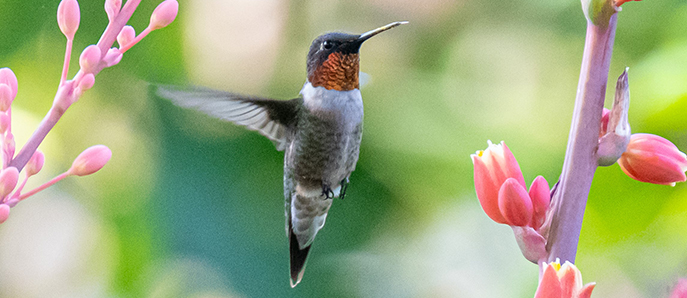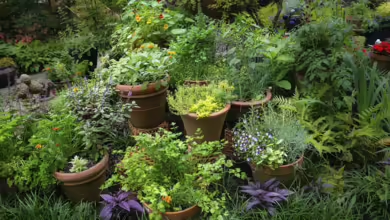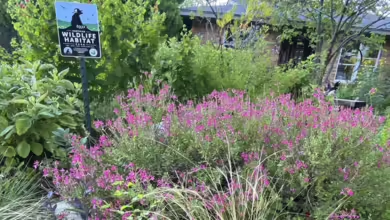Fun Facts About Our Hummingbirds

Think of a hummingbird as a tiny balloon animal with narrow straws for bones. The ruby-throated hummingbirds here are about 3.5 inches from the front of their bill to the end of their tail feathers and weigh only .1 to .2 of an ounce. The females are 10-25% larger than the males. They are built for speed and maneuverability.
Hummingbirds are only in the new world: North, Central and South America. There are at least 330 species of hummingbirds, with 17 seen regularly in different parts of Texas. In our area, the most prevalent is the Ruby-throated. We start seeing them in mid-March as they head north, have some residents in the summer, and more in August and September as they fly as far south as Panama for the winter.
As with most birds, the males are more colorful with a shimmering ruby-red throat that is not a pigment but rather a refraction of light on their brilliant throat feathers, called “gorget,” that is only visible when they are in the sun. The feathers on their backs are light green, and their bellies are white. This coloring allows the females to blend in with leaves to keep themselves camouflaged and protected.
The males do elaborate aerial dances to impress the females, allowing them to mate for a few seconds and then live separately. The female builds the nest, incubates the eggs, and raises the babies. By the time the nestlings are ready to fly, they are bigger than the mother because she has been so busy feeding them.
These flying jewels are real brainiacs, with their brains comprising 4.5% of their bodies, a higher percentage than any other bird. They have the memory of an elephant and return each year to the area where they hatched. For some, this is a long trip from Panama up through the middle of the U.S. and then west to the Canadian Rockies. They also remember every place they have had a drink on this journey, so they stop at the exact locations each year. If you don’t have your feeder out when they arrive, they will hover in that spot to let you know they are thirsty.
Hummers have a very high metabolism, requiring lots of food — the equivalent of a whole refrigerator full daily. About half of their diet is insects full of protein, and the other half is nectar, a sweet energy-filled liquid produced by flowers or that we can make. See the sidebar for the recipe.
Red is the color they can see best and associate with nectar, but they will also drink from flowers of other colors. Some of their favorite nectar plants are Turks’ cap, flame acanthus, hummingbird bush, and red yucca. After a nice drink, they sit at the top of small trees, tall shrubs, or on electric wires and hunt insects.
Hummingbirds are loners. They don’t live or migrate with other birds. When migrating north or south, the males go first, with the females two or three weeks later. When flying south, the young birds leave last and use their instincts to go where they have never been. Some take the land route to Mexico and Central America, and some prefer to fly over the Gulf of Mexico.
Many species of hummers roost and feed along the Texas Gulf Coast until there are favorable winds to help them get across the Gulf, a non-stop trip of about 18 hours.
The town of Rockport hosts a hummingbird celebration the third weekend of September, where I saw 10 different species vying for positions at the hundreds of feeders provided by residents.
Enjoy these birds while they are here. And remember to put out your feeder next March and plant some red tubular flowers so you can feast your eyes on these gorgeous tiny-winged creatures.

Hummingbird Liquid Food Recipe
- Mix four parts of boiling water with one part of white granulated sugar (no red food coloring, please)
- Let the liquid cool before serving
- Store the rest in the fridge for up to two weeks.
- Put the feeder where you can watch them drink.
- Thoroughly clean the feeder and replace the nectar every 2-3 days so it won’t go bad and make the birds sick.
Hummingbirds are very territorial, so if you want to put out multiple feeders, place them so a bird can only see one at a time. Put the feeder out in mid-March and leave it up until late October.





